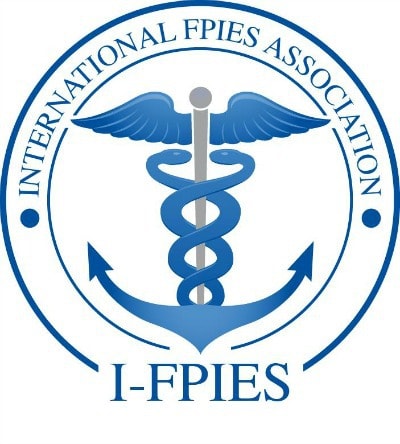WHAT IS FPIES – HOW TO GET AN FPIES DIAGNOSIS – AND WHAT TO DO NEXT

I’m often asked, what is FPIES? I get several emails and messages on Facebook asking about FPIES, so that is why I wrote this blog post. If you don’t know what FPIES is, or just recently received an FPIES Diagnosis, please know you’re not alone.
Food Protein Induced Enterocolitis Syndrome (FPIES)
is not your typical food allergy where you would see hives, fast reaction, anaphylaxis, these are IgE-mediated.
FPIES is Non-IgE-mediated,
meaning you can’t do skin/blood tests, it’s typically an internal manifestation, however, more people are saying their children also suffer some external symptoms like eczema.
What’s the difference between FPIES and a Nut Food Allergy?
This is a question I’m asked all the time. There are two types of allergies. IgE-mediated and Non-IgE-mediated.
Typical Food Allergy = IgE-mediated:
- fast reactions
- hives, eczema
- anaphylaxis
- internal and external manifestations
- positive skin/blood tests
FPIES = Non-IgE-mediated:
- slow delayed reaction, 2-3 hours after ingestion
- can’t test, FPIES results in negative skin prick or blood testing
- internal manifestations
- sometimes 7 or more days in chronic reactions
- some experience external skin reactions
You’ll first see FPIES manifestations when you introduce milk, soy, or even breastmilk. It’s extremely rare for children to react through breastmilk, but it is possible, so avoidance of trigger foods in mother’s diet to continue breastfeeding may be necessary. With Sweet Baby we didn’t realize she had FPIES until she started solid foods. It was her first time trying chicken when we were concerned about her having a possible allergy. Once she reacted the same way to oats we knew it was something more than the flu or a virus and thanks to the power of the internet and BabyCenter I self-diagnosed Sweet Baby with FPIES. I immediately called her doctor, joined FPIES facebook groups, and within a month of making an appointment at Children’s Hospital of Philadelphia we had a diagnosis. Our pediatrician had no clue what we were talking about, but thanks to the IAFFPE we were able to find the best doctors and so much information.

My daughter only suffered with these issues for 2 months, but many other children suffer as do the parents not knowing what is wrong with their child. Countless tests, doctors appointments, money, and time later they reach a diagnosis.. The most common triggers are milk, soy, rice, and oat. Sweet Baby has three triggers so far. Soy, Chicken, and Oats.
Recently we did a rice trial and during that trial we were concerned an actual virus may have been a reaction instead. We then learned that it was just a virus due to her blood work only having a little elevated of a white blood count. In an Acute reaction blood tests will usually show an elevated white blood count with increased neutrophils and eosinophils, elevated platelet count, anemia (low red blood cell count) or low albumin may occur, particularly in chronic cases. In acute severe episodes, patients can develop methemoglobinemia. There are other disorders that can cause the FPIES symptoms.. for example: GERD, (Gastrowaophageal Reflux Disease) Gastritis (stomach irritation) EoE, (eosinophilic esophagitis) and even EG/EGE (eosinophilic gastritis/gastroenteritis. Seeing someone who is experienced in dealing with FPIES is crucial not only for diagnosis but also for overall treatment of your child’s food allergy.
FPIES FACTS:
- FPIES is possible with any food.
- 60-90% of children affected by FPIES will outgrow it by the age of 3
- Some children have FPIES continued into adulthood.
- Acute reactions respond best with intravenous hydration, as well as Zofran through IV for vomiting
- Trigger Food avoidance is the only treatment at this time
- There is no cure for FPIES
- More research needs to be done
Acute:
- 2-3 hours of ingestion
- profuse vomiting, dry heaving, bile
- lethargy, limpness
- dehydration, low blood pressure
- 20% go into “shock
- 10% with methemoglobulinemia
- 6 – 8 hours diarrhea
- Congestion, cold like symptoms in days that follow including loose stools
Chronic:
- diarrhea
- blood in stools with mucous
- intermittent vomiting
- poor growth, weightloss; failure to thrive
- resolves about a week later once trigger food is avoided
- sometimes extended gut rest is needed
Finding safe foods for a child with FPIES is not the easiest task. One food that may be safe for my child won’t be safe for another and vice versa. The only way to find out if a food is safe or a trigger it needs to be trialed. When we first started solids we were worried about allergies since my husband and I both suffer from food and seasonal allergies. Our pediatrician was aware of this so we did what any other parent would do – took it slow! We introduced foods like our pediatrician recommended, one new food every 3-4 days. That’s when we knew something wasn’t right.. the allergies didn’t present like real allergies and that’s how we discovered Sweet baby had FPIES.

Food Trials:
- can be done at home or in a hospital with doctor supervision (chronic cases are a little tricky in the hospital due to the reaction time. Trigger food can be done in hospital for acute reaction, but once a certain amount of time has elapsed the child is sent home and communication with doctor is essential)
- if done in hospital child will have IV placed for precaution
- food should be slowly introduced, small amounts (we do 1 teaspoon and gradually increase)
- be prepared for a fail, but positive for a success.
I say be prepared meaning have everything ready if you need to rush to the ER. The IAFFPE now know as I-FPIES has a great emergency letter should you need to explain your child’s FPIES reaction to the doctor in the ER. Your child will get one from the doctor once they have a diagnosis as well. Please refrain from using this if you have not reached a diagnosis of FPIES as this may not be the best course of treatment for your child.
Trialing Known Triggers:
This is a touchy subject and each medical professional will have a different opinion. What I’ve realized is that there’s a WIDE range of opinion for everything about FPIES. There needs to be more research. That being said some doctors recommend re-trialing offending/trigger after 18-24 months, 12-24, some say 12 months after milk, and some say 6-8 months after soy. There is no clear cut answer and your child’s doctor should involved in retrial of a trigger food.
Who should be involved in your child’s treatment:
Each child with FPIES has different needs, symptoms, and each of those are usually address by more than one specialty.
- Allergist (key for diagnosis)
- Gastroenterologist
- Nutritionist
- Pediatrician (always keep your child’s regular doctor updated)
IAFFPE 1st Annual FPIES Education Conference:
I recently had the pleasure of attending IAFFPE (International Association for Food Protein Enterocolitis) 1st Annual FPIES Education Conference. I learned a bit I didn’t already know and was really excited to be able to connect with other FPIES Families as well as hear all of the best FPIES doctors speak. I can’t wait to go again next year!! I hope to see more parents and really just spread the word about FPIES. This is an excellent chance for you to really hear all there is to know about FPIES. The most exciting part for me was the part about CHOP (Children’s Hospital of Philadephia) getting a new center just for Food Allergies! This center should be starting in early 2014. In the past, we have had to make separate appointments, different dates, and it was a big hassle since they were in the separate building to top it all off. The goal is to have it all in one place. Many families travel near and far to come to CHOP for a diagnosis for their child, and this will definitely make the burden a little less overwhelming. They have big plans for this center from food trials, nutrition, food challenges, and of course treatment for your child. All new visits are on average 1 1/2 – 2 hours – this really helps the doctor get to know your child and helps you find the best plan going forward.
Learning to accept the fact your child has FPIES:
Your child has a food allergy, not an infectious disease. They can play, they can laugh, and they can most importantly live a healthy, happy, normal life. Yes, they will have to avoid trigger foods, but once you find out and weed through what they can and cannot have you’ve crossed the finish line so to speak. I thought for months “how will I ever eat dinner with my child, will she get sick if she eats something?” Yes, we eat dinner together! Her plate may have different food, but we eat as a family. If she gets sick from a new food we just avoid that food, add it to the list of triggers and move on. It’s scary in the beginning and you really have to go through those emotional phases. I was angry, upset, lost, and now I’ve accepted. There’s nothing you can do except be the best advocate for your child. Help them through this little hurdle, it may take a little time, but I promise you this, it will and does get easier. The most important thing to remember is you’re not alone.
We’re so excited to be adding food to our daughter’s diet. Adding a new food to her Safe foods list is like opening a present on Christmas morning. I do all I can to spread the word about FPIES in hopes to help others just like us. You can also follow I-FPIES formerly know as IAFFPE on Twitter and Facebook for the most recent news and updates.
This is not medical advice – this is from our experience with FPIES. Please see a medical professional for diagnosis and treatment of FPIES.
The post What is FPIES | FPIES Explained appeared first on Courtney's Sweets.

